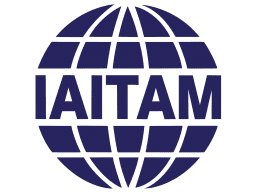It is about that time of the year when companies are trying to finalize their future budget cycle and financial allocations. Companies allocate roughly 5%, and even upwards of 10% for some industries, of company revenue for IT budget. This equates to a very large sum when you start considering the various companies in the financial, tech, retail, and manufacturing industries. To put it in perspective, a company with $10 billion in annual revenue would spend approximately $500 million. So this begs the question: Are the executives and upper management in a position to make intelligent and innovative business decisions with the data provided coming from the IT department?
LET’S TAKE A LOOK AT SOME OF THE CHALLENGES COMPANIES FACE WHEN TRYING TO FINALIZE THE FUTURE IT BUDGET.
- No governance established – Many companies do not have an established governance, policies, or procedures in place to efficiently manage the lifecycle of IT assets. More often I see companies working as separate groups in segregated systems with no set standards and no defined ownership. This type of behavior leads to inefficiency of resources, increased risks, and costly mistakes.
- No attention to IT Asset Management – The majority of companies have never had IT Asset Management practices at the forefront. There has not been a champion to own and incorporate it, so other priorities continue to undermine ITAM. There may also be misconceptions around ITAM practices that play a part in how well adopted they become, and stakeholders have not been properly informed of the need for it so it continues to take the back seat.
- No ITAM Maturity – There are many companies that have basic ITAM processes in place, but many of them are manual and lacking important data points. There may not be enough resources to effectively manage and optimize the entire IT asset portfolio, the necessary tools for doing so may not be available, or a combination of the two, prevent companies from moving up the maturity scale. Also, different departments and lines of business are working separately instead of together. This makes it extremely difficult to operate with efficiency and agility and to make strategic and innovative decisions.
SO WHAT DO YOU DO? DON’T WORRY, THERE IS HOPE!
Start by creating your “why” statement. Why is IT Asset Management important to the company? Support your argument with concrete examples and statistics to get the attention of executives and decision makers. Executive level buy-in is critical for making an ITAM practice successful.
Once you have executive support, work with key stakeholders on determining your highest priorities. What has the most impact on the various lines of business? Criteria may include things like largest area of spend, compliance/audit risk, time period of renewal or true-up.
You may currently be a in a position of preparing to finalize the 2020 budget, and the task feels daunting if you identify with any or all of the challenges listed above. You may know that you need to present the challenges to managers to gain their support, but you are not sure how or where to start. If so, we would love to help you get started.
We can partner with you at any point along your journey to help you map out and execute ITAM maturity.

